Best Places to Visit in the Balkans
Experience cultural pluralism to the fullest in the countries that make up the Balkan Peninsula.

Witness the Coastal Glamour of the Adriatic and Mediterranean
On the glittering coast of Croatia, you will witness the solemn air of the history-ladened Balkan lands ease off, leaving room for boundless fun. The hipper side of the peninsula unravels in the breezy ramparts of Dubrovnik, where bathing in the Adriatic sun is bolstered by majestic views in the backdrop. Shop till you drop in the city’s buzzing promenades, and spice it up with a little cultural sophistication. Experiencing history has never been this joyful surrounded by the mesmerizing landscape of northern Greece in Kalambaka. This is one of the best places to visit in the Balkans, where the intangible religious heritage meets the curious eye on soaring rock pillars.
Ancient Greek ruins, unbridled wisdom, cozy small-town vibes, and much more await in Delphi and Athens. You will get to immerse in this epic cultural scenery during the day, and party it all out in the capital’s hopping nightclubs at night. For a concentrated dose of the more traditional and authentic, Thessaloniki awaits, with its unforgettable coastal flair and hidden pockets of centuries-old customs.
Have a Taste of Culture Along the Danube
The true spirit of the Balkans unravels along the banks of the Danube. This is where most of the best places to visit in the Balkans are clustered. Every destination represents another pillar stone in the turbulent and equally astonishing history of the region. A day in one of the oldest cities in Europe and the proud capital of Serbia, Belgrade, will be just enough. Step into the medieval dreamlands of Romania’s one and only Transylvania to experience culture and adventure all at once. Majestic castles and forts wrapped in the emerald blanket of the countryside are not the only things it offers. Every piece of Transylvania is inscribed with intriguing folklore, invaluable culture, and mind-blowing history.
Balkan metropoles beckon with their gritty exuberance, inviting visitors to explore the countless quirky angles hidden within their alleys. Observe an artistic clash between the two sides of history in Bucharest, where urban architecture mesmerizes with contrast. The city’s artistic heritage is also too good to pass up. You will get more than you ask in terms of visual arts, music, and dance. There is no shortage of contrasting beauties in Sofia, as well. Roman ruins among Ottoman gems reflect the versatile character of the city to the fullest in the best places to visit in the Balkans.

Revel in a Marvelous Amalgam of Nature and History
There is an otherworldly appeal to the countless landmarks scattered across the deep green forests of the Western Balkans. The picture-postcard views you will witness along your trip start in Bosnia & Herzegovina. Take in all you can in the Old Bridge of Mostar, and daydream about this spectacular monument as you sip your Balkan coffee. Sarajevo’s charmful atmosphere is all the more bewitching thanks to the incredible countryside views. And a fascinating historical narrative will come right at your feet at its myriad museums. This part of the Balkans is all about raw cultural experience.
Make the best of Albania and Macedonia with evocative trips to Skopje and Tirana. These cities seem frozen in time with their well-preserved historic districts. On the other side of town, a soaring modern cityscape is developing. It offers eclectic museums, galleries, art shows, and entertainment centers to suit every taste. The best places to visit in the Balkans are the perfect balance between modern and traditional.
Must-See Sights in the Balkans
Here is everything you need to know about the best places to visit in the Balkans.

| This complex is one of the most beautiful and strongest fortified systems in Europe, but the lively streets show that there is more! |
Why You Should Visit:
Experience the charm of the “Pearl of the Adriatic” with its stunning old town, pristine beaches, and a rich history that dates back to the 7th century.
Don’t Miss:
-Walk along the city walls and enjoy the breathtaking views of the Adriatic Sea. The walls that surround Dubrovnik’s Old Town are considered one of the best-preserved fortification systems in Europe.
-Explore the Old Town and visit the Onofrio Fountain, St. Saviour Church, and Rector’s Palace.
-Take a cable car to the top of Mount Srđ for panoramic views of Dubrovnik and the surrounding islands.
Keep in Mind:
-Be mindful of the crowds, especially during peak tourist season in the summer months. To avoid the crowds, consider visiting early in the morning or later in the evening.
-Wear comfortable walking shoes, as the city is built on steep hills and there are many stairs to climb.
-Be respectful of the local culture and traditions, especially when visiting religious sites such as churches and monasteries.

| Sibiu is a city in Transylvania, central Romania. It’s known for Germanic architecture in its old town, the legacy of 12th-century. |
Why You Should Visit:
Step into the fairytale-like medieval city of Sibiu and discover its beautiful architecture, cozy cafes, and vibrant cultural scene.
Don’t Miss:
-Visit the Brukenthal National Museum, which houses an impressive collection of art and cultural artifacts.
-Explore the charming cobblestone streets of the Old Town and visit the Evangelical Cathedral and the Council Tower.
-Attend the ASTRA Open Air Museum, an impressive outdoor museum showcasing traditional Romanian architecture and way of life.
Keep in Mind:
-Be prepared for changing weather conditions, especially during the winter months when temperatures can drop below freezing. Bring warm clothing and sturdy footwear.
-Be aware of pickpockets and other petty crime, especially in crowded areas such as the Christmas Market.
-Respect the local culture and traditions, especially when visiting religious sites such as the Evangelical Cathedral or the Orthodox Cathedral.

| Meteora is hands down one of the most impressive regions in Greece! It is a magical land of towering rocks topped with monesteries located in the northern side of Greece. |
Why You Should Visit:
Explore the breathtaking rock formations of Meteora and visit the awe-inspiring monasteries that cling to their steep cliffs, offering stunning views of the surrounding landscape.
Don’t Miss:
-Visit the six monasteries that are built on top of the towering rock formations and enjoy the stunning views of the surrounding valleys.
-Hike along the trails that connect the monasteries and enjoy the natural beauty of the area.
-Visit the nearby town of Kalambaka and explore its charming streets and traditional Greek taverns.
Keep in Mind:
-Wear comfortable shoes and clothing suitable for hiking, as many of the monasteries require a hike up steep paths or stairs.
-Be respectful of the local culture and traditions, especially when visiting the monasteries. Dress modestly and follow any rules or guidelines posted at the entrance.
-Be prepared for hot weather during the summer months, and bring sunscreen and plenty of water.
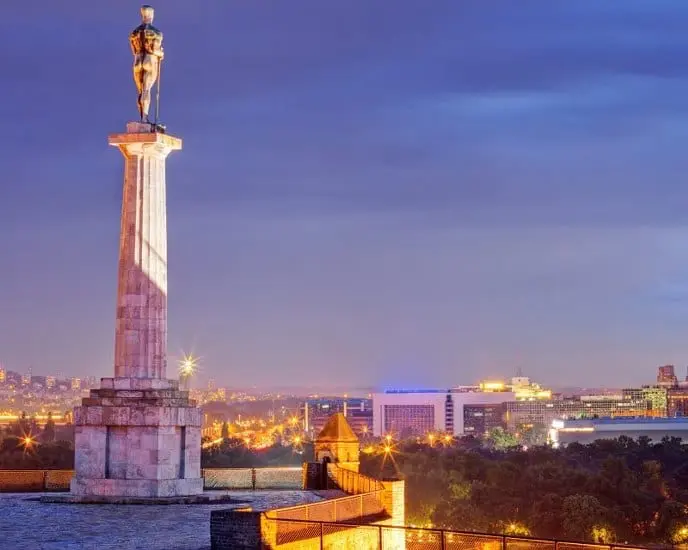
| One of the oldest cities in Europe and the only one built on the confluence of two rivers, also known as the city that never sleeps. |
Why You Should Visit:
Immerse yourself in the dynamic city of Belgrade, where the East and West meet, and discover its vibrant nightlife, rich history, and multicultural charm.
Don’t Miss:
-Visit the Kalemegdan Fortress, which is a historic fortress that overlooks the confluence of the Sava and Danube rivers.
-Explore the bohemian quarter of Skadarlija and visit its many restaurants, cafes, and galleries.
-Visit the Nikola Tesla Museum, which is dedicated to the life and work of the famous inventor and scientist.
Keep in Mind:
-Be aware of pickpockets and other petty crime, especially in crowded areas such as the pedestrian zone or public transport.
-Respect the local culture and customs, especially when visiting religious sites such as the St. Sava Temple or the Belgrade Mosque.
-Be prepared for hot weather during the summer months, and bring sunscreen and plenty of water.

| Ohrid is a large town in North Macedonia on the shore of Lake Ohrid and a UNESCO heritage site since 1980. |
Why You Should Visit:
Enjoy the serene beauty of Ohrid, with its crystal-clear lake, picturesque old town, and UNESCO-listed monasteries that testify to its rich cultural heritage.
Don’t Miss:
-Visit the Ohrid Old Town, a UNESCO World Heritage Site that is home to many historic buildings and landmarks.
-Take a boat tour of Lake Ohrid and enjoy the stunning scenery and crystal-clear waters. Lake Ohrid is one of the most beautiful lakes in Europe and is a popular tourist destination.
-Visit the Bay of Bones Museum, which is an archaeological site that showcases the prehistoric culture of the region.
Keep in Mind:
-Respect the local culture and customs, especially when visiting religious sites such as the Church of St. Sophia or the Monastery of Saint Naum.
-Be mindful of the crowds, especially during peak tourist season in the summer months. To avoid the crowds, consider visiting early in the morning or later in the evening.
-Be prepared for hot weather during the summer months, and bring sunscreen and plenty of water.

| Mostar is a city in Bosnia and Herzegovina, known for the iconic Stari Most (Old Bridge) that acts as a calling card for the Balkans. |
Why You Should Visit:
Witness the beauty of the historic bridge and the stunning Ottoman-style architecture in the charming town of Mostar, and immerse yourself in its vibrant arts scene and traditional cuisine.
Don’t Miss:
-Visit the Old Bridge, which is a UNESCO World Heritage Site and one of the most famous landmarks in Bosnia and Herzegovina.
-Explore the Old Town and visit the Kujundziluk bazaar, which is a colorful marketplace filled with local handicrafts and souvenirs.
-Take a stroll along the Neretva River and enjoy the stunning views of the Old Town and the surrounding mountains.
Keep in Mind:
-Be respectful of the local culture and traditions, especially when visiting religious sites such as the Koski Mehmed Pasha Mosque or the Catholic Cathedral.
-Wear comfortable walking shoes, as the city is built on steep hills and there are many stairs to climb.
-Be aware of pickpockets and other petty crime, especially in crowded areas such as the Old Town or the Old Bridge.
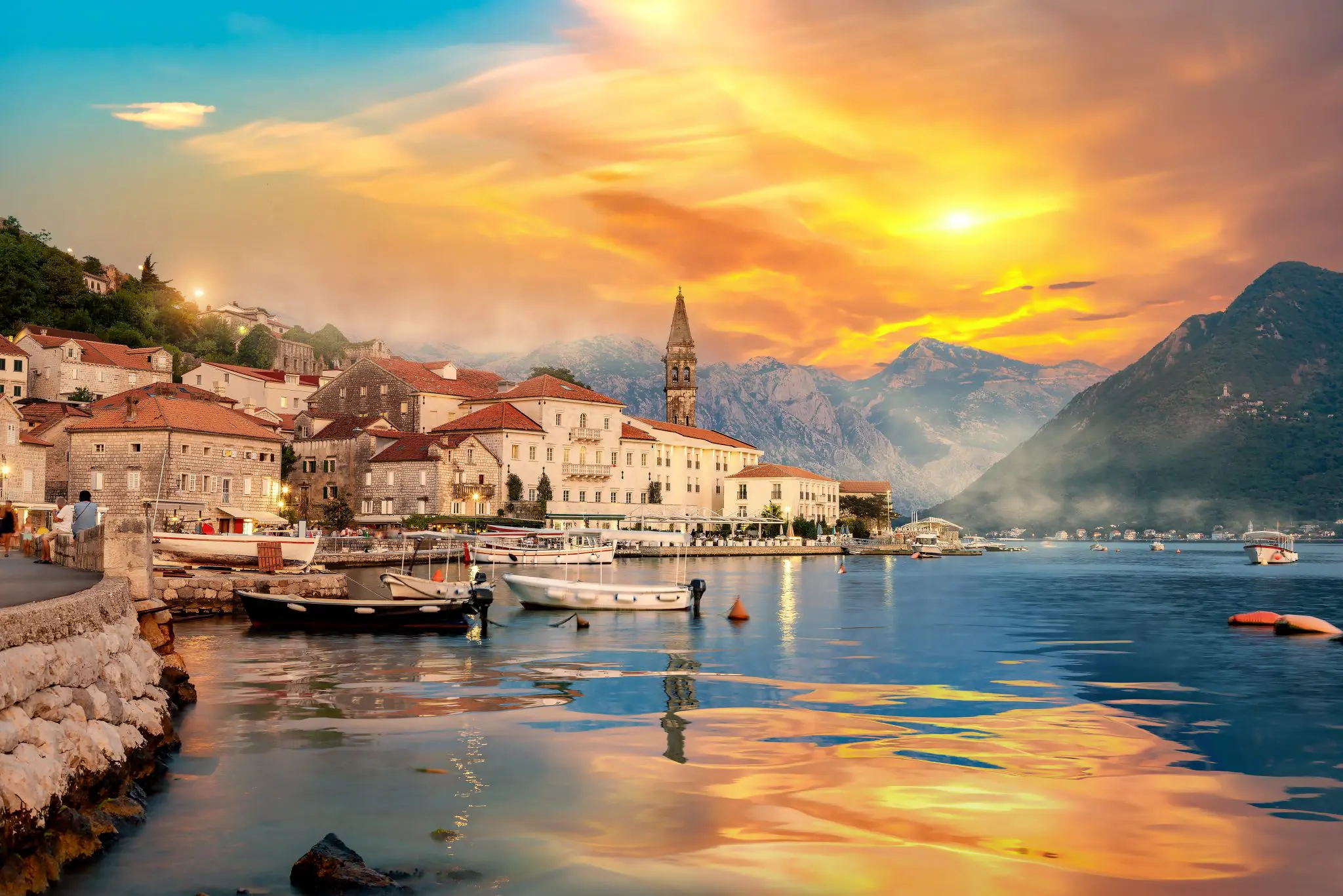
| Montenegro’s chief coastal town, Kotor is a picturesque town where maritime history and Romanesque architecture are the moving forces. |
Why You Should Visit:
Discover the stunning bay of Kotor, surrounded by imposing mountains, and stroll through the atmospheric old town with its picturesque squares, churches, and palaces.
Don’t Miss:
-Walk along the city walls and enjoy the breathtaking views of the Bay of Kotor.
-Visit the St. Tryphon Cathedral, which is a medieval church that dates back to the 12th century. The cathedral is a stunning example of Romanesque architecture.
-Explore the Old Town of Kotor and its many charming streets and squares. The Old Town is a maze of narrow streets and alleyways that are filled with historic buildings, churches, and museums.
Keep in Mind:
-Wear comfortable walking shoes, as the city is built on steep hills and there are many stairs to climb.
-Be respectful of the local culture and traditions, especially when visiting religious sites such as the St. Tryphon Cathedral.
-Be prepared for hot weather during the summer months, and bring sunscreen and plenty of water.
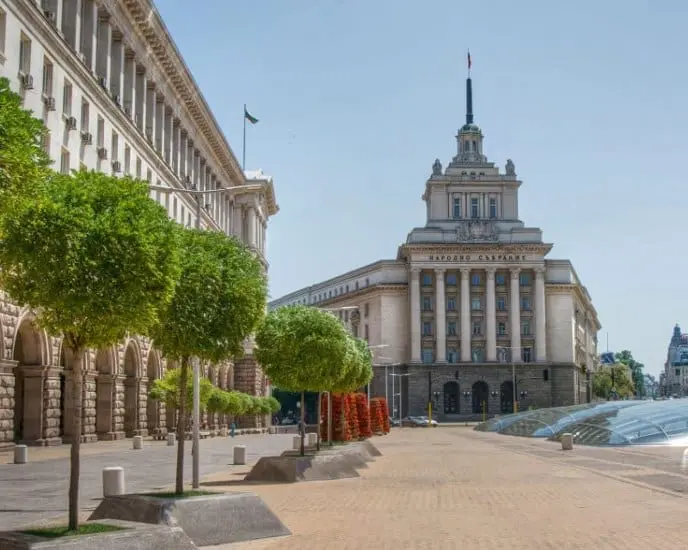
| Sofia is the capital and largest city of Bulgaria. It has rich history from Roman and Ottoman Empires. Also famous with it’s night life. |
Why You Should Visit:
Experience the vibrant energy of Sofia, the Bulgarian capital, with its blend of ancient ruins, beautiful parks, and lively nightlife, making it a perfect destination for any traveler.
Don’t Miss:
-Visit the Alexander Nevsky Cathedral, which is one of the largest Eastern Orthodox cathedrals in the world.
-Explore the Vitosha Mountain, which is a popular hiking and skiing destination located just outside of Sofia.
-Visit the National Palace of Culture, which is a cultural center that hosts concerts, exhibitions, and other cultural events.
Keep in Mind:
-Respect the local culture and customs, especially when visiting religious sites such as the Alexander Nevsky Cathedral.
-Be aware of pickpockets and other petty crime, especially in crowded areas such as the pedestrian zone or public transport.
-Be prepared for changing weather conditions, especially during the winter months when temperatures can drop below freezing. Bring warm clothing and sturdy footwear.
Balkans FAQ
What is the best time of year to visit Dubrovnik?
The best time to visit Dubrovnik is during the shoulder seasons of May-June and September-October. During these months, the weather is warm and sunny but not too hot, and the crowds are smaller than during the peak summer months of July and August. The sea is also warm enough for swimming during these months. However, if you don’t mind the crowds and the higher temperatures, the summer months can also be a great time to visit Dubrovnik as there are many events and festivals happening, including the Dubrovnik Summer Festival which features music, theater, and dance performances throughout the city.
How long does it take to hike to the monasteries in Meteora?
The length of time it takes to hike to the monasteries in Meteora depends on which monastery you want to visit and which trail you take. On average, it can take anywhere from 20 minutes to 1 hour to hike up to the monasteries, depending on your fitness level and the difficulty of the trail. The most popular monasteries are the Holy Monastery of Great Meteoron, the Holy Monastery of Varlaam, and the Holy Monastery of Roussanou. It’s important to note that some of the trails can be steep and challenging, so it’s important to wear comfortable shoes and bring plenty of water. Additionally, if you plan on visiting multiple monasteries, it may take several hours to hike between them, so it’s best to plan your visit accordingly.
Are there any restrictions on what to wear when visiting religious sites in Sibiu?
When visiting religious sites in Sibiu, it is generally recommended to dress modestly and conservatively as a sign of respect for the religious customs and traditions of the area. This means that both men and women should avoid wearing shorts, short skirts, or revealing clothing. It is also important to cover your shoulders and avoid wearing sleeveless shirts or tank tops. For women, it is recommended to wear a headscarf when entering churches or monasteries. If you are unsure about what to wear, it’s always a good idea to ask a local or do some research beforehand to ensure that you dress appropriately for the occasion. It’s important to remember that religious sites are places of worship and should be treated with respect and reverence.
What are some traditional dishes to try in Belgrade?
Belgrade is known for its delicious traditional cuisine, with dishes that reflect the city’s history and cultural influences. Some of the most popular dishes to try include cevapi, pljeskavica, sarma, Karadjordjeva schnitzel, and prebranac. Cheese lovers will definitely enjoy trying gibanica, a delicious cheese and pastry dish. To accompany these delicious meals, you can try the local fruit brandy, rakija. Be sure to sample kajmak, a creamy cheese spread that is a staple condiment in Serbian cuisine. With such a rich and diverse culinary scene, there is always something new and exciting to try in Belgrade.
What is the history behind the Old Bridge in Mostar?
The Old Bridge, also known as Stari Most, is a 16th-century Ottoman-era bridge in Mostar, Bosnia and Herzegovina. It was designed by Mimar Hayruddin and was considered a masterpiece of Islamic architecture and engineering. The bridge was destroyed during the Bosnian War in 1993, but was rebuilt using traditional methods and materials in 2004. Today, it is a symbol of the city’s resilience and cultural heritage, and is a popular tourist destination and UNESCO World Heritage Site.
How long does it take to hike the Kotor City Walls?
It takes about 1-2 hours to hike the Kotor City Walls. The walls form a circular route around the old town of Kotor, stretching for over 4 km and reaching a height of 260 meters above sea level. The hike involves steep inclines and uneven steps, so it can be quite challenging in places. However, the stunning views of the city and the Bay of Kotor make it well worth the effort. It is recommended to bring plenty of water, wear sturdy footwear, and take breaks as needed during the hike. It is also best to avoid hiking in the heat of the day, so morning or late afternoon hikes are recommended.
What is the nightlife like in Sofia?
Sofia, the capital of Bulgaria, has a vibrant and diverse nightlife scene. There are numerous bars, clubs, and pubs scattered throughout the city, catering to a wide range of tastes and preferences. Many of the best nightclubs are located in the Studentski Grad area, with music ranging from house and techno to pop and R&B. The city also has a thriving alternative and indie scene, with venues like the Mixtape 5 club offering live music and DJ sets. For a more laid-back night out, visitors can check out the many craft beer bars or rooftop cocktail bars in the city center. There are also plenty of late-night food options, including street food vendors and traditional restaurants that stay open late. Overall, Sofia’s nightlife scene has something to offer for everyone, whether you’re looking for a wild night out or a relaxed evening with friends.
What is the best way to experience local culture in Meteora?
The best way to experience local culture in Meteora is to immerse yourself in the traditions and customs of the region. One way to do this is by visiting the monasteries and learning about the history and religious significance of the site. Many of the monasteries have museums or exhibitions that offer insight into the daily lives of the monks and the history of the region. Another way to experience local culture is by trying the traditional cuisine of the area. Meteora is known for its hearty and flavorful dishes, such as the famous mushroom soup, stuffed peppers, and moussaka. There are many local restaurants and taverns in the area that serve traditional Greek cuisine, often made with locally-sourced ingredients.
What are some of the top water activities to do in Ohrid?
Ohrid is a great destination for water activities, with plenty of options available for visitors to enjoy the beautiful lake. Swimming is a popular choice, with numerous beaches and swimming spots dotted around the lake. Kayaking and canoeing are also great ways to explore the area, and boat tours offer a different perspective on the town and surrounding landscape. Whether you’re looking for a relaxing swim or an adventurous day out on the water, Ohrid has something to offer for all water enthusiasts.
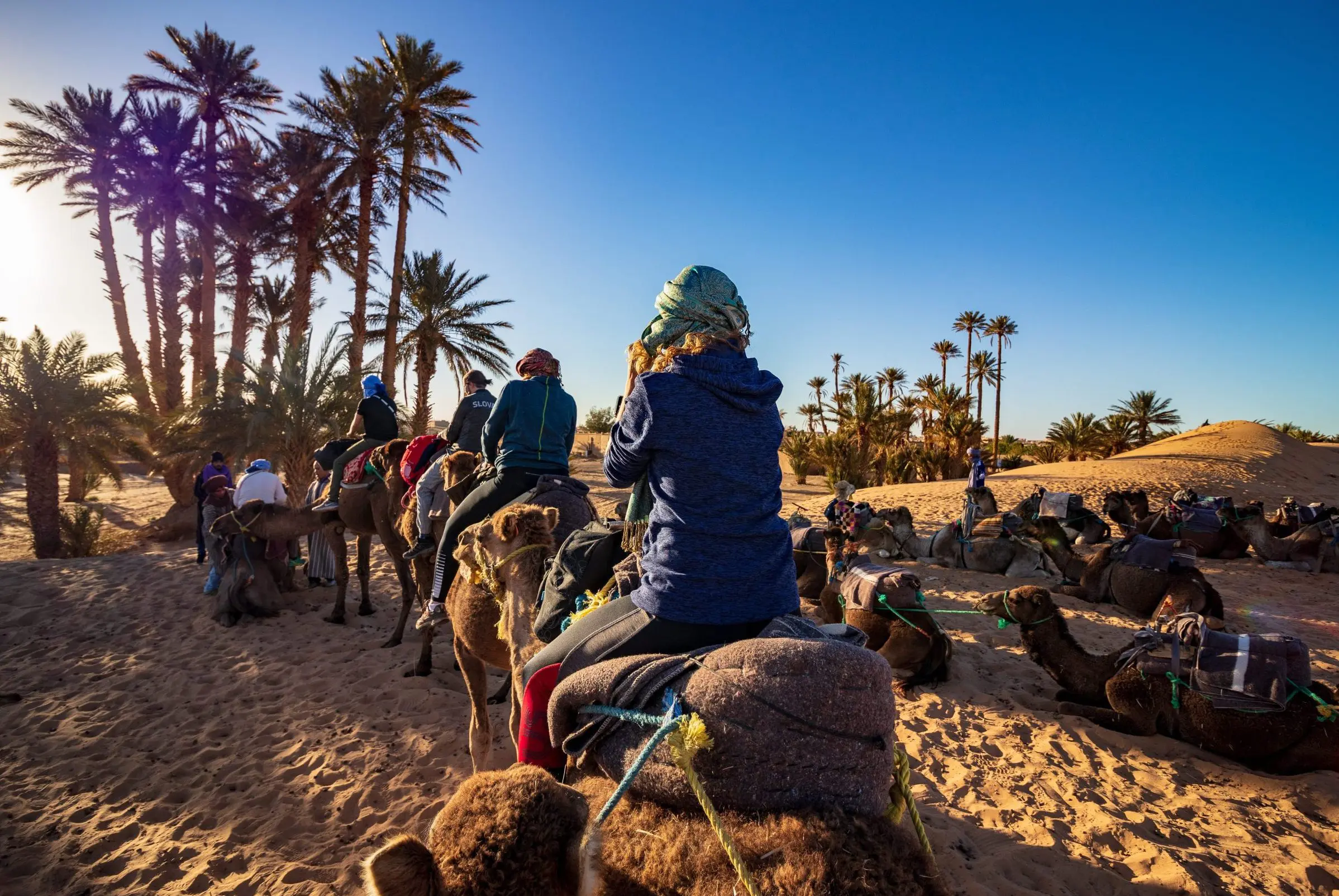 October Sale: 50% Off
October Sale: 50% Off Croatia Sailing 2025: 50% Off
Croatia Sailing 2025: 50% Off ANZAC Day Trips : Save 40%
ANZAC Day Trips : Save 40% 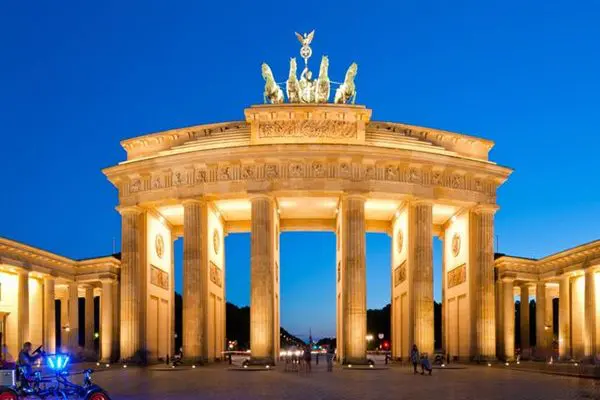 Central & Eastern Europe Tours: 50% Off
Central & Eastern Europe Tours: 50% Off  Why Travel Talk
Why Travel Talk Travel Talk Blog
Travel Talk Blog Responsible Travel
Responsible Travel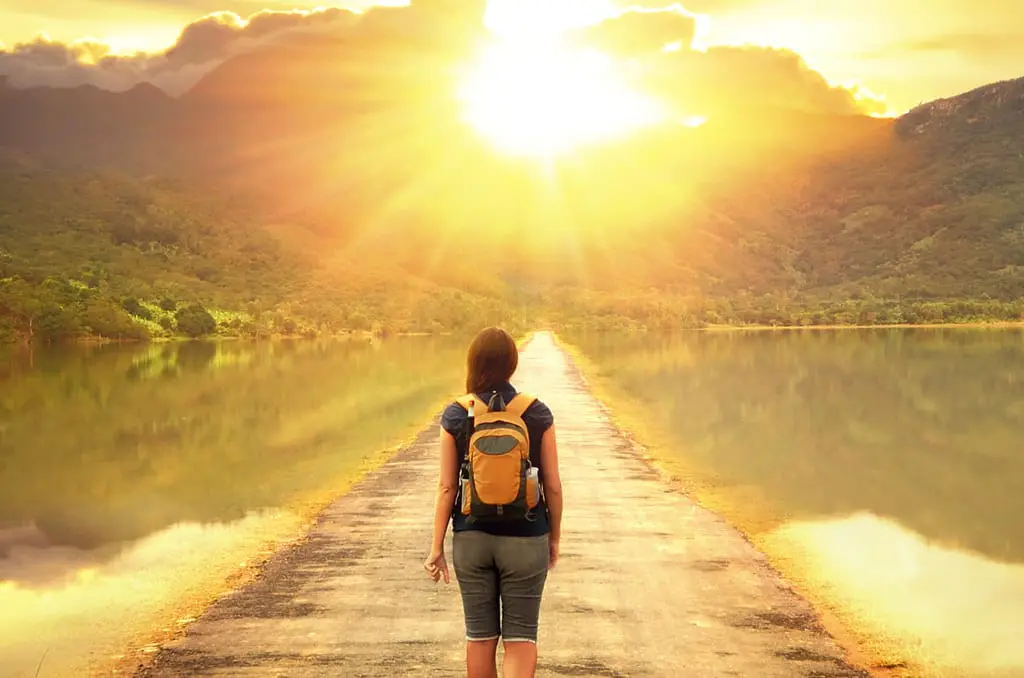 Fair Travels with Travel Talk
Fair Travels with Travel Talk